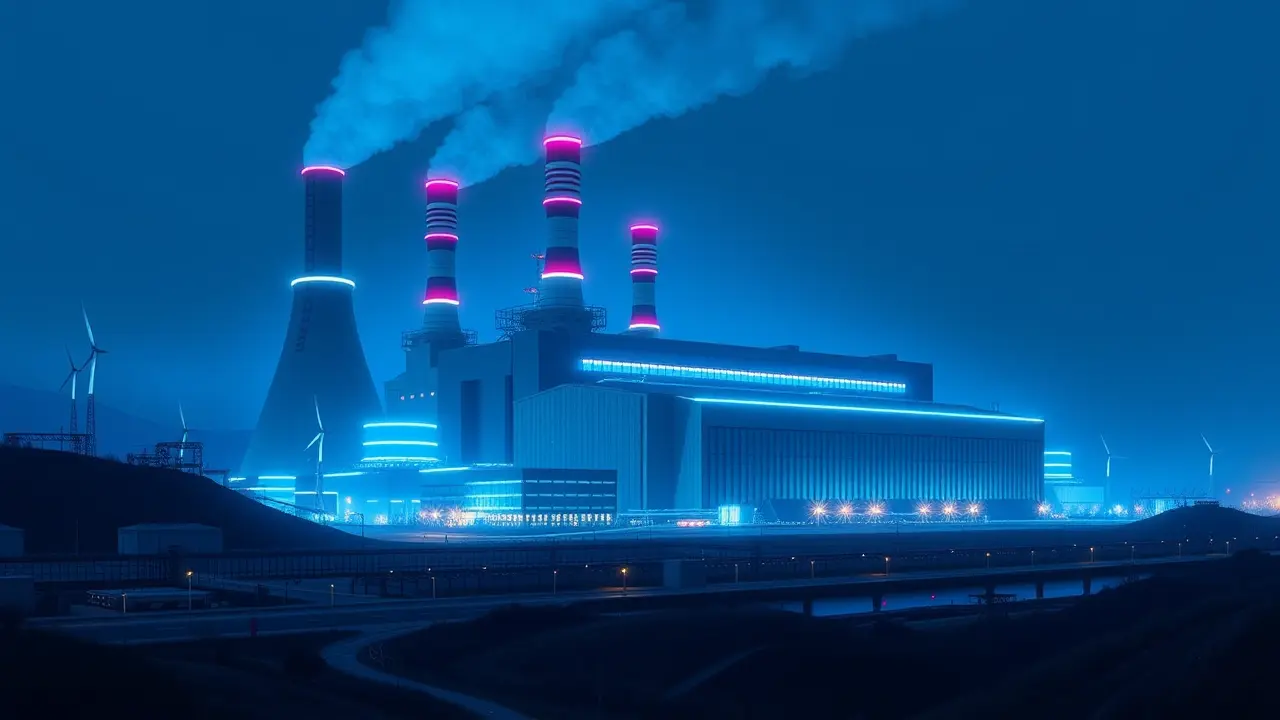
FinancecommoditiesOil and Energy Markets
China's Beilun Power Station Becomes Largest Coal Plant.
RA
Rachel Adams
4 hours ago7 min read1 comments
The expansion of the Yangtze River Delta’s Beilun Power Station to a staggering 7. 34GW capacity, officially crowned as China's largest thermal power station following the successful 168-hour full-load trial of its new one gigawatt coal-fired Unit Nine, represents a profound and sobering milestone in the global energy landscape, a development that echoes with the grim persistence of our fossil fuel dependency even as climate scientists issue increasingly dire warnings about carbon saturation and its catastrophic impact on global ecosystems.This achievement, proudly announced by the state-owned China Energy Investment Corporation, is not merely a statistic on a balance sheet; it is a tangible manifestation of a deepening ecological contradiction, where the urgent need for industrial and residential power in the world's second-largest economy collides headlong with the planet's fragile climatic equilibrium. While the engineering feat is undeniable—the sheer scale of the Beilun plant now dwarfs many other facilities, providing a formidable base load for the industrial heartland of Zhejiang province—it arrives at a moment when the International Energy Agency has explicitly called for an immediate halt to new fossil fuel infrastructure if the world is to have any hope of limiting warming to 1.5 degrees Celsius, a target that feels increasingly like a receding mirage with every new coal unit that comes online. The narrative from Chinese authorities often emphasizes the integration of ultra-supercritical technology for higher efficiency and lower emissions per unit of power, a technical nuance that, while important, feels akin to rearranging deck chairs on the Titanic when the fundamental trajectory remains one of escalating atmospheric CO2, a gas that knows no borders and will contribute to the melting glaciers, intensified wildfires, and disrupted monsoons that are already displacing communities from Bangladesh to the Horn of Africa.One must consider the human and environmental cost embedded in this colossal structure: the particulate matter that will inevitably seep into the lungs of nearby populations in Ningbo, the relentless demand for coal extracted from landscapes scarred by mining, and the vast volumes of heated water discharged back into the local waterways, altering aquatic life in a silent, slow-moving crisis. The parallel expansion of China's renewable sector, which leads the world in installed wind and solar capacity, offers a flicker of hope, yet the simultaneous cementing of this coal-powered leviathan suggests a deeply entrenched energy strategy that is hedging its bets, prioritizing immediate economic stability and energy security over the long-term, existential imperative of a rapid green transition. This is not just a Chinese story; it is a global parable of our time, a stark reminder that technological prowess absent a corresponding moral and ecological compass can lead us down a path of pyrrhic victories, where we win the battle for megawatts but lose the war for a livable planet, leaving future generations to inherit an atmosphere heavy with the legacy of our short-sighted industrial choices.
#lead focus news
#China
#coal power
#energy infrastructure
#Beilun Power Station
#renewable energy
#installed capacity
Stay Informed. Act Smarter.
Get weekly highlights, major headlines, and expert insights — then put your knowledge to work in our live prediction markets.
Related News
© 2025 Outpoll Service LTD. All rights reserved.
